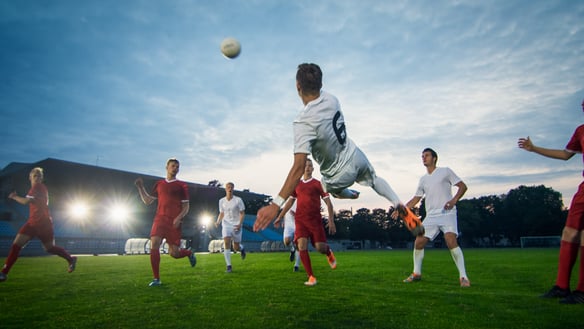-
Ingredient SolutionsQuickly narrow your search. Browse products in our sortable catalog. View Catalog
-
ApplicationsQuickly narrow your search. Browse products in our sortable catalog. View Catalog
-
ResourcesRecently Posted
-
PLT People & Planet
-
About
Our international network, passionate team of experts and extensive industry knowledge is what sets us apart.
 Seth FlowermanCEO
Seth FlowermanCEO
Nutritional Supplementation in Male College Soccer Players: Effects on Performance and Oxidative Stress

Nutritional Supplementation In Male College Soccer Players: Effects On Performance And Oxidative Stress
Shawn M. Arent, PhD, CSCS1, David DiFabio, MA, CSCS1, John Greenwood1, Joseph Pellegrino1, Carey A. Williams, PhD2
Abstract
INTRODUCTION: High-level power-endurance athletes are subjected to intense conditioning during preseason preparation in order to be able to sustain near maximal efforts for extended periods. Many of these athletes walk a fine-line between optimal training and overtraining as they attempt to maximize sports pecific fitness.
PURPOSE: To examine changes in performance capacity and oxidative stress responses in college soccer players over the course of preseason preparation and to determine the impact of supplementing with a meal-replacement formula consisting of a proprietary GliSODin® and nutraceutical blend purported to reduce oxidative stress and enhance training adaptations.
METHODS: Male Division I college soccer players (N=22) performed a progressive maximal treadmill test at the beginning and end of preseason in order to assess changes in velocity at lactate threshold (VLT) and at onset of blood lactate accumulation (VOBLA), time to exhaustion, and lipid hydroperoxide (LPO) response. Following baseline testing, athletes were randomly assigned to receive the antioxidant/nutraceutical blend (EXP) or an isocaloric equivalent (CON) daily for the duration of the preseason training.
RESULTS: Repeated measures MANOVA revealed significant changes in performance capacity and oxidative stress markers over the preseason (p<.001). Follow-ups indicated that DVLT (0.8 + 0.3 km·h-1, p<.05), DVOBLA (1.1 + 0.3 km·h-1, p<.01), and Dtime to exhaustion (39.4 + 16.5 s, p<.05) were improved across groups. Furthermore, examination of effect sizes (ES) and 95% CI indicated that EXP had a greater reduction in LPO responses during testing from preseason to end of preseason compared to CON (ES = -0.55). LPO responses were elevated in CON from pretest to posttest (ES = 0.78). EXP, when compared to CON, also appeared to have a greater improvement in time to exhaustion (ES = 0.39) and VLT (ES = 0.30).
PRACTICAL APPLICATION: Preseason training in male college soccer players resulted in significant improvements in performance capacity, as indicated by improved VLT, VOBLA, and time to exhaustion. In addition, though the short-term effects appear modest, supplementing the diet with a proprietary GliSODin®/nutraceutical blend may enhance some of these effects, possibly by allowing for improved recovery.














